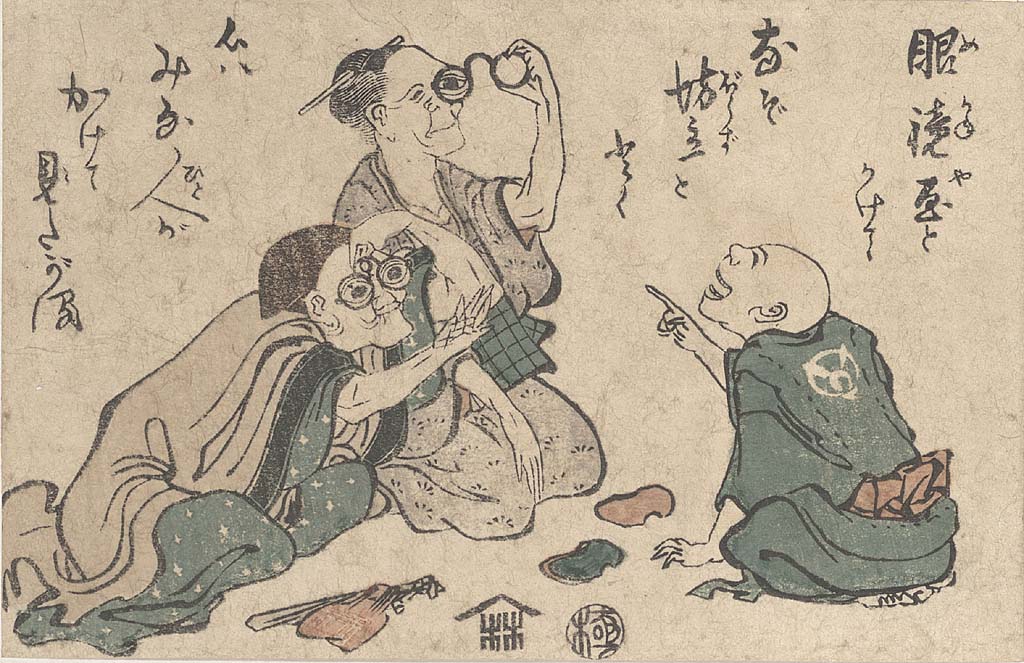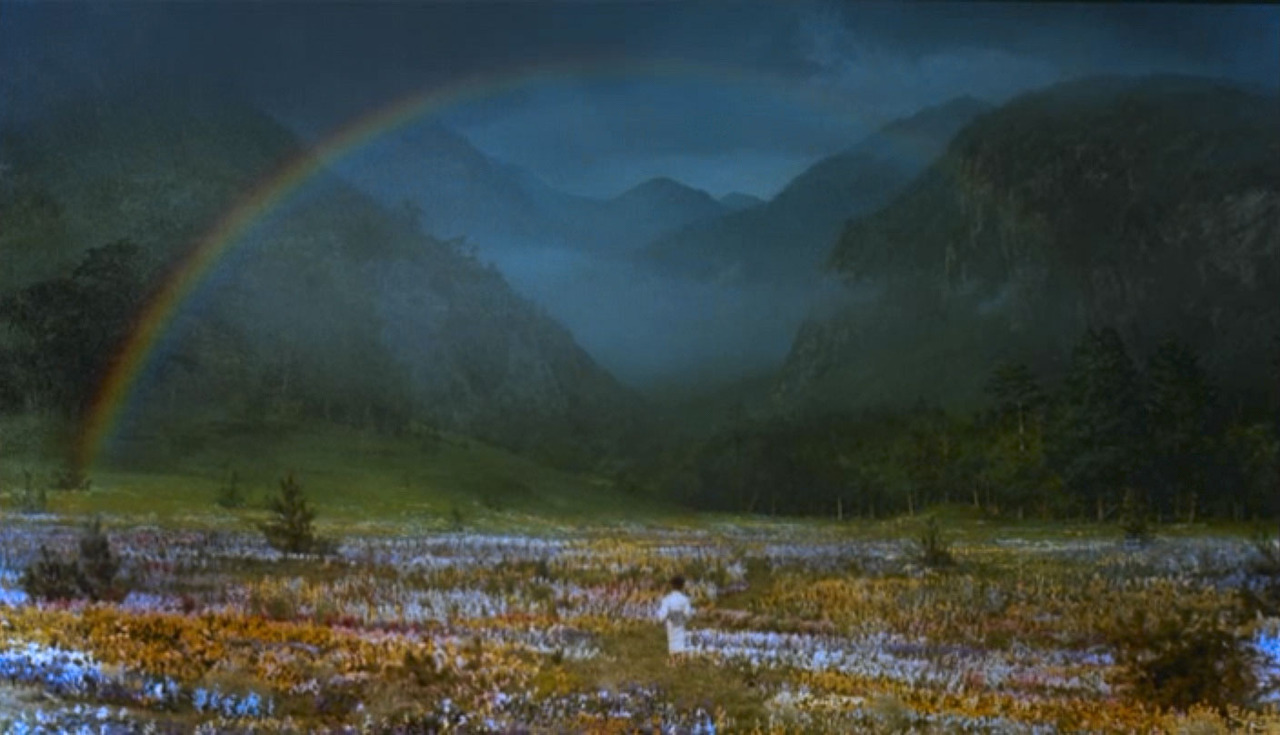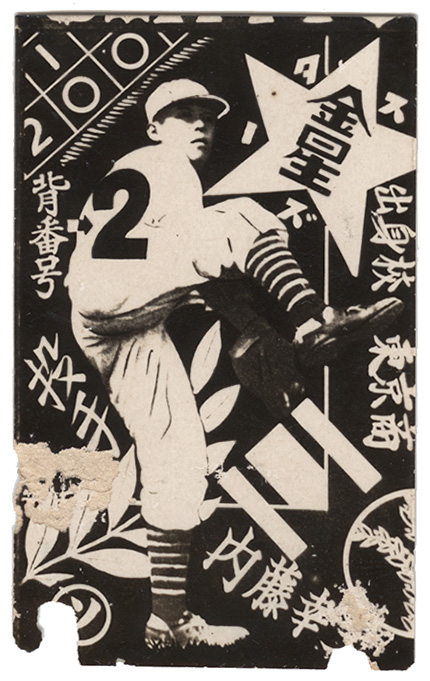The New York Times has posted a lovely analysis of my favorite woodblock print by Hokusai, “Ejiri in Suruga Province” (circa 1830, from his “Thirty-Six Views of Mt. Fuji” series), in which a sudden blast of wind is the invisible subject of the piece. Nature and landscape and social class and quotidian humor, all meeting together in a pivotal moment of art history where Dutch imports influenced the Edo-era artists whose own innovative works quickly influenced the French.
Tag: japan
-
Hokusai’s Sudden Gust
-
Towards a True Children’s Cinema: on ‘My Neighbor Totoro’
This is an excellent essay on Miyazaki’s / Studio Ghibli’s place in the canon of art cinema, the nature of “boredom” in the life of children, and how cinematic experiences can be so much more for children than our U.S. blockbusters lead us to believe.
When Roger Ebert asked Miyazaki about the “gratuitous motion” in his films—the bits of realist texture, like sighs and gestures—Miyazaki told Ebert that he was invoking the Japanese concept of “ma.” Miyazaki clapped three times, and then said, “The time in between my clapping is ma.” This calls to mind the concept of temps morts, or dead time, in the European art cinema of the 1960s. Temps morts is a pause, a beat, a breath, a moment that doesn’t advance the plot. But far from being dead, Miyazaki’s moments of “ma” are full of life—there is a simple joy in watching his worlds move. In “animating”—breathing life into—a world that looks like our own, Miyazaki carries forward a spirit from the very beginning of film history.
This is one of the greatest descriptions of the power of animation that I’ve read in a long time, and something that you can see in all of the small moments of Miyazaki’s films.
On children and boredom:
But I think some of the common thinking about children’s boredom and attention is inaccurate. Children are bored standing in line at the bank or the post office, certainly—they have no banking of their own to do, no mail of their own to send. But if you were to put a child and an adult in an empty room full of scattered objects, I suspect the adult would grow bored much faster. […] A child can never exhaust the possibilities of a park or a neighborhood or a forest. Totoro is travel and transit and exploration, set against lush, evocative landscapes that seem to extend far beyond the frame.
Bonus: this essay is from an full Studio Ghibli issue of Bright Wall / Dark Room! I need to start reading this magazine.
-
Chibi: The Japanese Word That’s Cute And Offensive
Chibi has its roots in kobun, or classical Japanese. The kobun noun tsubi 粒つび, which means “tiny, rounded thing,” eventually evolved into the verb tsubu 禿つぶ, which describes something becoming worn down or sharp edges getting rounded out.
A good example would be a calligraphy brush losing its hairs (because that’s what they used to write back in the days of classical Japanese).
The reading of tsubu eventually changed to chibiru 禿ちびる, and suddenly we’re not too far from chibi.
I had a brief curiosity about what chibi fully means and came across what may be my new favorite post on etymology. Thorough history, examples, usage issue notes and cautions, and even a drawing guide. More word explications should come with an adorable drawing guide.
-
Hokusai Glasses

Megana-ya (Seller of Eyeglasses), by Hokusai, circa 1811-1814, part of a incredibly great collection of health-related Japanese woodblock prints housed at the University of California, San Francisco. Having recently bought a new pair of glasses, I can relate.
(Via Pink Tentacle)
-
Kurosawas Dreams

Akira Kurosawa’s Dreams (夢,Yume): a mostly quiet, artful film with eight short vignettes (five dreams and three nightmares) reflecting the remembered dreams of the director throughout his lifetime. Despite the segments being separate, discontinuous stories, I enjoyed their shared abstract sense of looking for something, a great dream motif. Unfortunately the quality of the pieces vary, but the ones that are good border on the sublime. In some ways they remind me of animated versions of Jeff Wall’s artifically-constructed photographs (but maybe I’m just conflating this film’s first nightmare with Wall’s Dead Troops Talk).
Like many of his other later movies, Kurosawa had difficulty getting this film financed by the Japanese studios, but a script sent to Steven Spielberg helped secure money from Warner Bros. Interestingly, the visual effects in the movie (including a walking-through-an-oil-painting sequence later echoed in What Dreams May Come) were supervised by Ken Ralston of Industrial Light and Magic (of Star Wars and Back to the Future fame), and there’s a cameo by Martin Scorsese as Vincent van Gogh, so despite the traditional Japanese cultural elements, there’s definitely a Western tinge to this one.
Other good movies about dreams and dreaming:
- 8½ (film and memory as dream)
- Brazil (dreams as heroic escapism)
- Waking Life (once you get past the philosophizing, it clicks)
- The Science of Sleep (not my favorite Gondry film, but fun)
- Hatsu Yume (Bill Viola’s video art piece, worth mentioning even if it’s not strictly a ‘movie’)
- Paprika (vividly crazy dream visuals from an anime master)
- I assume that Inception and Vanilla Sky / Abre los ojos should be in this list, but I haven’t seen them yet…
Any others I should know about?
-
Sensing Nature
From David Cyranoski’s review of the Sensing Nature exhibition at the Tokyo Mori Art Museum:
The merging of nature and human activity harks back to earlier Japanese tradition, according to art historian Toshio Watanabe of the University of the Arts in London, who is lecturing at the gallery. The famed woodblock landscapes of Japan usually depict human endeavour coexisting with nature — unlike Western art, in which nature is an awesome, sublime force that often excludes or overpowers humans. Even in Hokusai’s famous 1832 painting The Great Wave off Kanagawa, Watanabe explains, the people don’t look panicked and no boats are overturned: “The picture is as much about the energy of the boatmen as the waves.”
Above video from the show: Snow, an interactive installation of feathers created by Yoshioka Tokujin.
-
Hirokazu Kore-edas ワンダフルライフ Wandâfuru Raifu (Afterlife)

From Hirokazu Kore-eda’s ワンダフルライフ (Wandâfuru raifu), released in the U.S. in 1998 as Afterlife. This is likely my favorite movie of all time. Dig up a copy at your neighborhood indie video store when you get a chance, it’s good. It’s a simple, quiet parable about life, death, loss, memory, love, and cinema, somewhere between Kurosawa’s Ikiru and Michel Gondry’s Eternal Sunshine.
After whining for years about someone borrowing my out-of-print DVD copy without returning it, I finally looked around and discovered the vastly superior Japanese NTSC Region 2 copy of the movie. ¥3,990 later, I’m now able to enjoy it again as I saw it at the theater in anamorphic widescreen, optional subtitles, and none of the horrible digital low-pass smoothing that someone thought would “fix” the grainy 16mm film’s appearance. Time for a movie screening, I think…
-
Japanese Bromide Baseball Card Prints

Besuboru Bromides, John Gall’s beautiful collection of Japanese baseball card bromide prints (ブロマイド). The full set can be found on his Flickr account, along with a billion other great graphic arts images. I think I need to trawl through his whole photoset now, and pick up his book Sayonara Home Run!…
(Via Monoscope)
-
Cho Chabudai Gaeshi — Flip the Table
Taito’s new Cho Chabudai Gaeshi, a game based on a literal interpretation of the Japanese idiom “flip the table” (chabudai gaeshi). It gladdens my heart to see new weird games being made for the arcade. At least it’s easier to relate to than Boong-Ga Boong-Ga.
As one commenter on Kotaku notes, “If they localized this in the US it’d have to be called ‘F*ck This’”
(Via Offworld)
-
The Final Footage from the JAXA KAGUYA / Selene moon probe
The final footage from the Japanese JAXA KAGUYA/Selene moon probe’s telemetry camera before it crashed to the surface (as planned). There’s something poignant about these last bits of video – after the years of engineering, planning, and information-gathering, it’s got to be hard not to personify the things. See also my favorite science/UI video of all time: final telemetry from the NASA Huygens probe.

